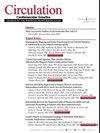CKing Precision in the Interpretation of Diagnostic Biomarkers.
引用次数: 0
Abstract
Creatine kinase (CK) is a dimeric globular protein that includes 2 subunits.1 The different combinations of the 2 subunits of the CK dimer, CK-M and CK-B, lead to 3 isoforms of the cytoplasmic enzyme.2 CK-MM is primarily expressed in skeletal muscles and represents the greater part of serum CK. Two isoenzymes also exist in mitochondria.1 From a physiological perspective, CK is vital to catalyze the reversible exchange of high-energy phosphate bonds, which is crucial for energy buffering in tissues with variable energy demand, such as skeletal muscles.1 From a clinical perspective, the measurement of CK, a biomarker of muscle damage,3 is a routine part of the assessment of patients with several conditions. See Article by Siddiqui et al A frequent use of CK as a biomarker is in the assessment of patients with muscle pain or weakness while being treated with a statin, which is now broadly referred to as statin-associated muscle symptoms (SAMS).4,5 Because muscle aches and pains are unspecific, subjective, and frequently observed with multiple common conditions, CK measurement is a key component in the evaluation of patients reporting SAMS to identify those at risk of more severe muscle problems, such as myopathy or rhabdomyolysis (severe myopathy in the presence of myoglobinemia or myoglobinuria and renal impairment/failure).5 Fortunately, severe SAMS accompanied with CK elevation >10× the upper reference limit (URL) are extremely rare, occurring in 1 per 1000 to 1 per 10 000 patients per year.5 For the clinician, muscle symptoms in the presence of no or only minor to modest CK elevations represent a particular challenge to discriminate SAMS from other secondary causes (hypothyroidism, other drugs). In the case the former is suspected, this often leads to a laborious exercise, for both the patient and the clinician, that …诊断性生物标志物解释的精密度。
本文章由计算机程序翻译,如有差异,请以英文原文为准。
求助全文
约1分钟内获得全文
求助全文
来源期刊

Circulation: Cardiovascular Genetics
CARDIAC & CARDIOVASCULAR SYSTEMS-GENETICS & HEREDITY
自引率
0.00%
发文量
0
审稿时长
6-12 weeks
期刊介绍:
Circulation: Genomic and Precision Medicine considers all types of original research articles, including studies conducted in human subjects, laboratory animals, in vitro, and in silico. Articles may include investigations of: clinical genetics as applied to the diagnosis and management of monogenic or oligogenic cardiovascular disorders; the molecular basis of complex cardiovascular disorders, including genome-wide association studies, exome and genome sequencing-based association studies, coding variant association studies, genetic linkage studies, epigenomics, transcriptomics, proteomics, metabolomics, and metagenomics; integration of electronic health record data or patient-generated data with any of the aforementioned approaches, including phenome-wide association studies, or with environmental or lifestyle factors; pharmacogenomics; regulation of gene expression; gene therapy and therapeutic genomic editing; systems biology approaches to the diagnosis and management of cardiovascular disorders; novel methods to perform any of the aforementioned studies; and novel applications of precision medicine. Above all, we seek studies with relevance to human cardiovascular biology and disease.
 求助内容:
求助内容: 应助结果提醒方式:
应助结果提醒方式:


